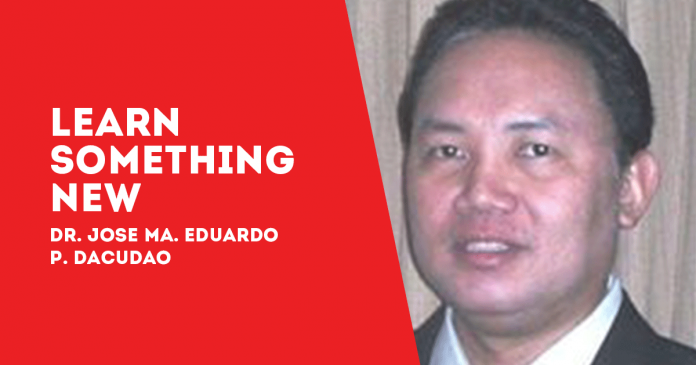
BY DR. JOSE PALU-AY DACUDAO
THERE IS a biological basis for multilingualism. The human brain is hardwired to learn multiple languages, and this is evidenced by the fact that many people in the non-Tagalog areas of the Philippine are already multilingual, knowing the indigenous language, the regional lingua franca, Tagalog, and English. For example, a Manobo from CARAGA is typically quadrilingual by her teens, knowing how to speak Manobo, Cebuano, Tagalog, and English. A Karay-a from Panay is likewise typically quadrilingual by her teens, knowing how to speak Kinaray-a, Hiligaynon, Tagalog, and English. And so on. There is no biological barrier for Tagalogs to learn other Philippine languages. The condition of Tagalogs multilingual in other Philippine languages if properly explained is eminently sensible, feasible, and worthy, and the only people I know of who would insistently and vehemently oppose such a condition, in spite of reasonable explanations, are Tagalista supremacists.
The above multilinguistic program will clearly implement the “auxiliary official languages” provision of the Constitution. Note that unlike the ‘Filipino’ language provision, which pertains to an undefined language that is technically impossible to create satisfactorily without marginalizing and probably killing most of our Philippine languages, our existing Philippine languages are real and clearly defined. Each of them can be taught in our schools and communication systems even under the present 1987 Constitution. This course of action is highly recommended. All that is to be done is to promulgate enabling laws and budget out the funds to do it. These language subjects shall replace the numerous subjects in Tagalog. The millions of pesos that are being needlessly spent in ‘developing’ and teaching an impossible ‘Filipino’ language, that does not economically benefit and that culturally harms the non-Tagalog ethnic peoples of the Philippines, could be channeled into such an endeavor.
Meanwhile English, the language of international science, technology, commerce, and diplomacy, a necessary language that keeps our economy afloat, and that has functioned as a neutral leveling tongue in the Philippines for more than a hundred years, shall continue as a lingua franca among Filipinos from different ethnic groups, and as the language of school subjects in the sciences, social sciences, and math.
In stark contrast to the present Philippine condition, many nations of the world have abandoned or have begun to abandon the One Nation, One Language policy since World War II by adopting the Multiple Official Languages model. The imposition of a single language on all peoples of a country is increasingly being seen as a harmful vestige of Jacobin ultra-nationalistic 19th century France, which was in the habit of beheading its non-conforming citizens by the thousands./PN







